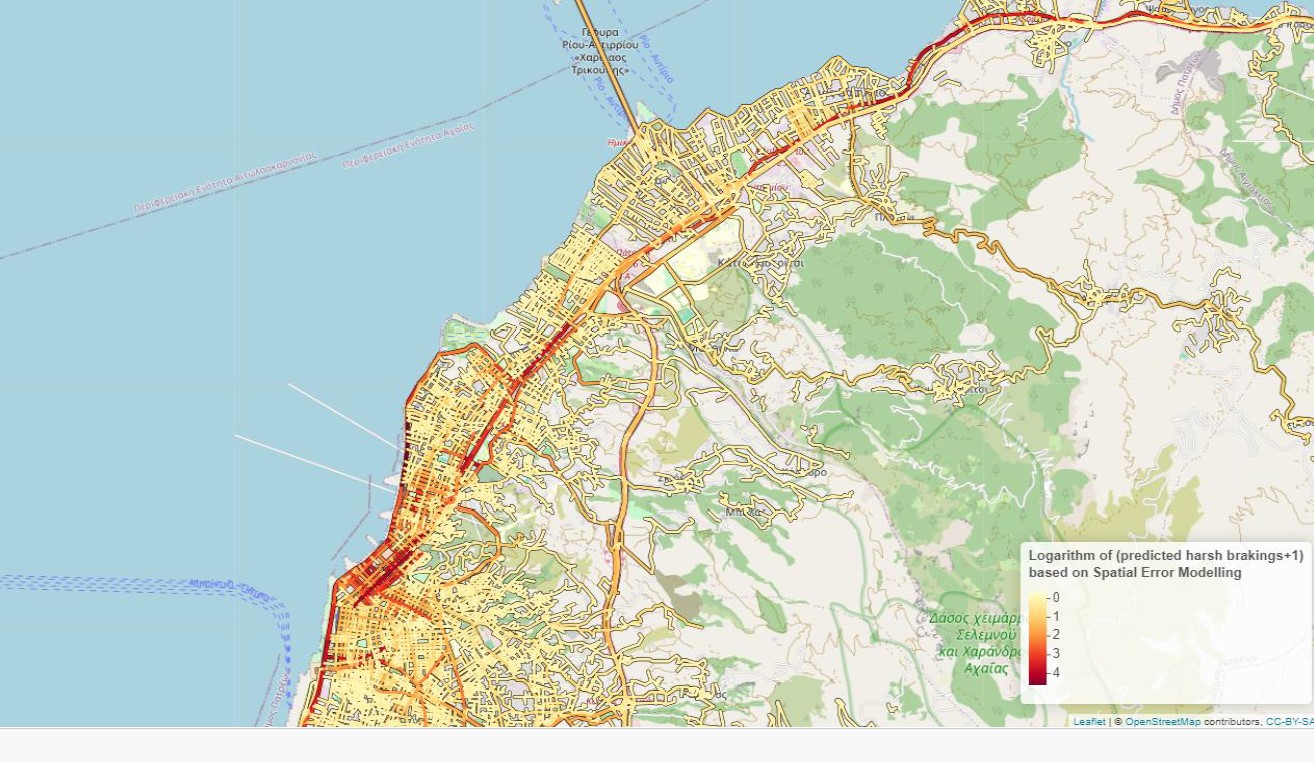
This paper aims to leverage large-scale spatio-temporal data from smartphone sensors and geometric design characteristics for spatial analysis of telematics-based surrogate safety measures across various road environments. Two distinct statistical models have been developed: a non-spatial log-linear model and a spatial error model. The dependent variable in both models is the logarithm of the number of harsh braking events observed in each considered segment. The study area is located within the Western Greece Region and en-compasses 9,355 road segments. The findings reveal a positive correlation be-tween harsh braking events and the length of road segments as well as the number of recorded trips per segment. Furthermore, variables associated with speeding, mobile phone usage, and road segment linearity exhibit positive correlations with the number of harsh braking events in the examined segments. Moreover, harsh braking events on motorways are found to be lower when compared to other road types. In conclusion, the results of this study indicate that the spatial error model outperforms the non-spatial model in terms of data fit and yields more reliable outcomes.
| ID | pc528 |
| Presentation | |
| Full Text | |
| Tags |













